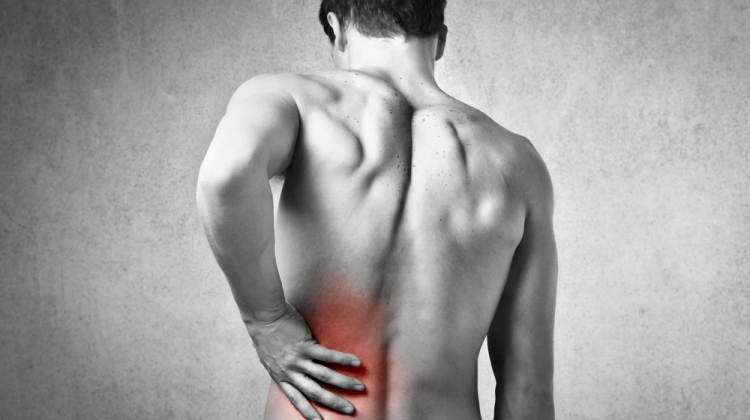


Lower back pain is a common discomfort, and many of us accept it as a sign of ageing. What may surprise you is that lumbar spine stenosis is usually the culprit. Dr Li Yung Hua, orthopaedic and spine surgeon from Mount Elizabeth Hospital, helps us understand our spine and manage this degenerative condition.
As we grow older, degenerative changes in the lumbar spine - or our lower backs - are inevitable. The lumbar spine is the support that links our upper body to the lower half, and bears the most weight when we are upright. It is the shock-absorber and flexible portion of the spine that is subject to stress and strain. Over time, degenerative changes such as "wear and tear" set in, resulting in symptoms that range from mild pain to severe, disabling pain that requires treatment.
According to Dr Li, problems related to the lower back are very common in Singapore, but spinal stenosis is often dismissed. Many patients who have leg pains without back pain were initially unconvinced when he told them the problem was in the lower back. With appropriate treatment, some of which included surgery, many patients recover very well. In fact, spinal stenosis surgery has one of the best outcomes among all types of spinal surgeries.
Causes of the condition
Spinal stenosis is a condition where the spinal canal narrows, either in its central portion, peripherally in the lateral recess, or in the nerve root canal. The cause can be congenital or acquired, or in most cases, both. This can result from lifting heavy objects improperly, staying crouched or seated for too long, or as a result of some type of trauma to the spine or pelvis.
Tell-tale signs of lumbar spine stenosis
Lumbar spine stenosis usually affects those who are middle-aged or older. Men are more likely to be affected than women. Initial symptoms include bouts of lower back pain and stiffness, which may progress to the lower limbs over the course of months or years. Lower back pain radiating to the buttocks and legs is aggravated by movement such as walking.
Physical signs may be entirely absent in early cases, and may be rather non-specific even when present. People with the condition may unwittingly adopt a 'simian stance', a position where the hips and knees are slightly flexed, with the trunk stooping forward. Spinal movements may be restricted for some. Neurologic examination may be normal, or uncover profound sensory, motor and reflex abnormalities in one or both extremities. In rare cases, there may be sphincter disturbance.
Diagnosis for lumbar spine stenosis
The diagnosis will start with a complete medical history and physical examination. Some key questions which aids the diagnosis includes:
These questions can help the doctor distinguish lumbar spinal stenosis from other disorders.
Imaging studies may also be ordered to find the root cause. This often begins with plain X-rays of the back and sometimes the hips. These X-rays can show the doctor the various signs associated with spinal stenosis including loss of normal intervertebral disc height, bone spurs, and spinal instability. The ultimate diagnosis is made via magnetic resonance imaging (MRI) or computed tomography (CT) scan. The more advanced tests help visualise the nerves in the lower back to ascertain if they were compressed from lumbar spinal stenosis.
We got your back
Once lumbar spine stenosis is confirmed, Dr Li often prescribes conservative treatment to alleviate painful symptoms. If the conservative treatment fails, surgery is another treatment option.
Conservative care is often sufficient is most cases. A variety of methods is available, including activity modification, physiotherapy, medication, epidural steroid injection, and spinal support with a corset or brace. Traditional Chinese Medicine treatment such as acupuncture may improve the symptoms in some patients. As lumbar spine stenosis is not life-threatening and rapid neurological deterioration is very rare, surgery should only be sought after non-operative treatment has failed.
Decompression surgery may be necessary if the above fails to work, or if there is severe and progressive weakness or loss of bowel or bladder function. The main goal of the surgery is to remove the structures that are compressing the nerves in the spinal canal or vertebral foramen. As removing too much of the spine may cause instability, spinal fusion will help by attaching vertebrae together to eliminate the motion at that level. This procedure also helps with spinal deformity. Other procedures such as non-fusion stabilisation and the use of interspinous spacer are also suitable in some cases.
Surgery for lumbar spinal stenosis can be very successful in most cases for the leg symptoms. However, this ultimately depends on the severity and duration of the nerve compression, as there may be permanent damage that is not relieved with surgery. Therefore, it is best to seek treatment earlier if there are symptoms or if there is presence of neurological deficit.
Publication of article by courtesy of Dr Li Yung Hua, Orthopaedic & Spine Surgeon at Mount Elizabeth Hospital
You may also be interested in our Live Great Guides. To find out more, click here.